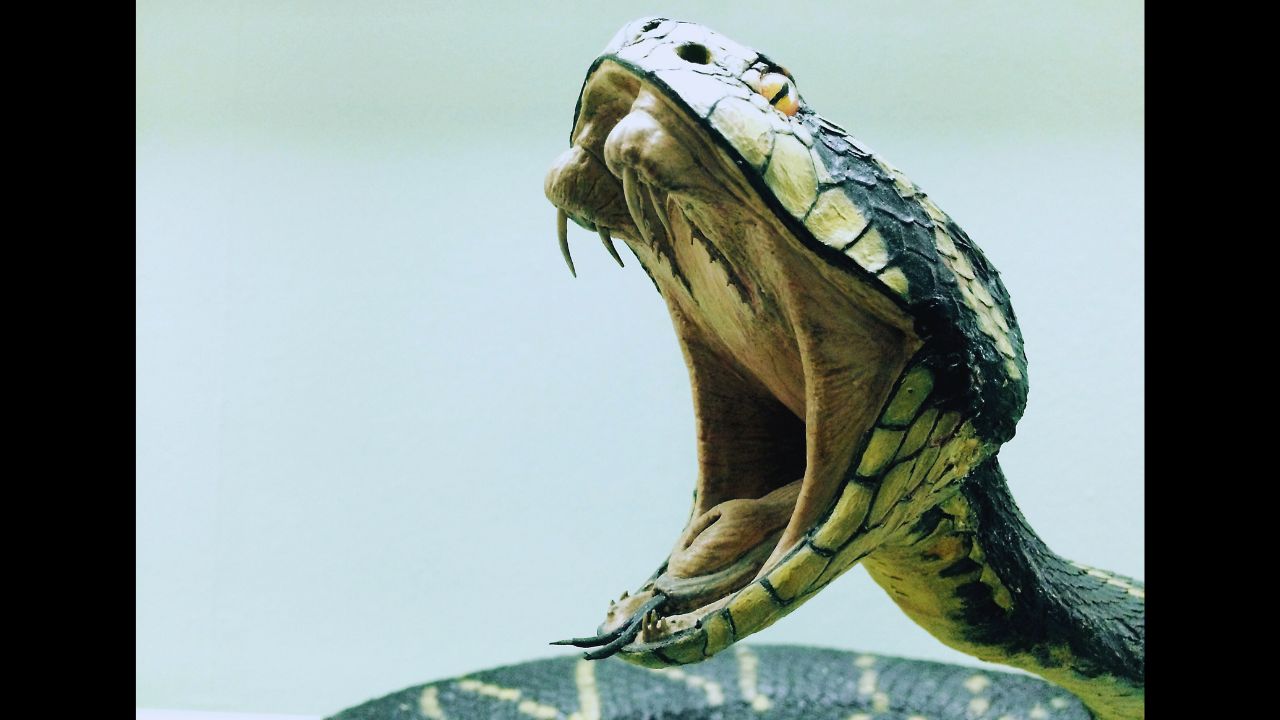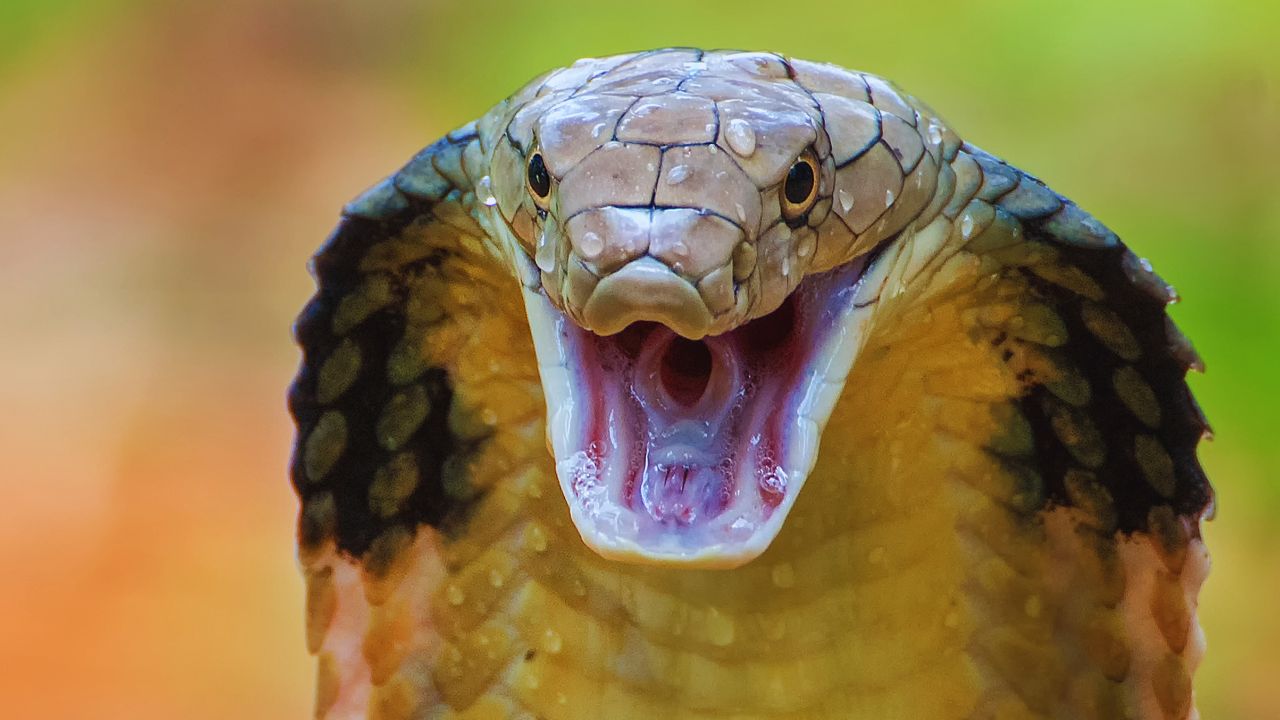One of the world’s most powerful and venomous snakes is the monocled cobra, sometimes called the Indian spitting cobra. In its native South Asian areas, this species is revered and approached with care due to its strong venom and unusual look. The monocled cobra, while not having the same amount of worldwide awareness as the Indian cobra, is a significant member of the cobra family and has distinct traits and habits that make it an intriguing topic of research.
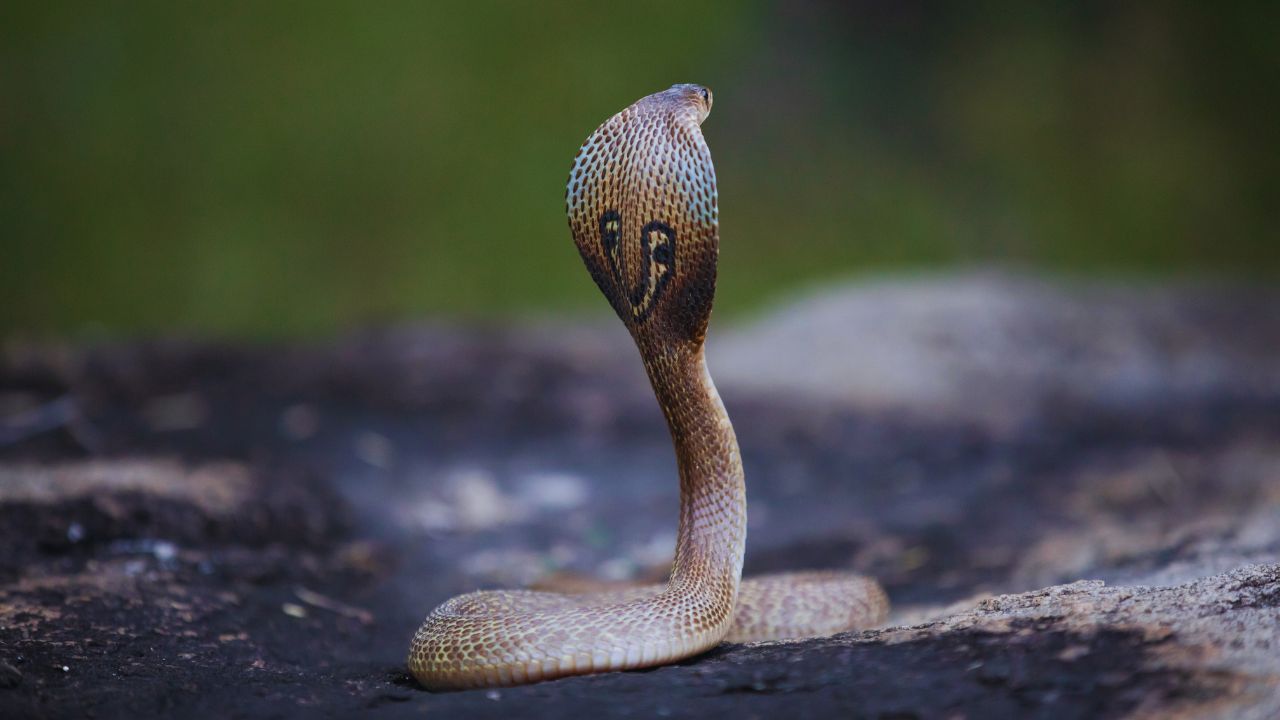
| Category | Details |
|---|---|
| Scientific Name | Naja kaouthia |
| Kingdom | Animalia |
| Phylum | Chordata |
| Class | Reptilia |
| Order | Squamata |
| Family | Elapidae |
| Genus | Naja |
| Conservation Status | Least Concern |
| Locations | Asia |
Unique Qualities and Recognition
The stunning physical traits of the monocled cobra (scientific name Naja kaouthia) set it apart. Its body is usually long and thin, reaching a maximum length of 7.5 feet; however, most individuals are closer to 4 or 5 feet. Its hue ranges from grayish-brown to a softer brown, with sporadic crossbands of light yellow. The trait that stands out the most is the unique monocle-shaped design on the rear of the hood. This pattern is distinct among cobras, consisting of a pale ring around a black core circle.
The color of the monocled cobra’s belly contrasts sharply with that of its dorsal side, which is often darker. Albino and leucistic varieties are uncommon and distinctive color mutations, while the conventional hue is the most common. Herpetologists and collectors are very interested in these uncommon variants.

Distribution and Habitat
The natural habitat of the monocled cobra is found across South Asia in a variety of settings. Its habitat is spread throughout several nations, such as:
India
Bangladesh
Bhutan
Nepal
China
Vietnam, Cambodia
Malaysia
Myanmar
Thailand
The monocled cobra inhabits grasslands, woodlands, shrublands, wetlands, and agricultural fields in these areas. It prefers areas where it can obtain a reliable source of food and shelter with ease. The cobra is known to live in cracks and burrows, coming out to feed mostly at dusk. This is consistent with its hunting technique, which involves ambushing victims by taking advantage of the low light levels.
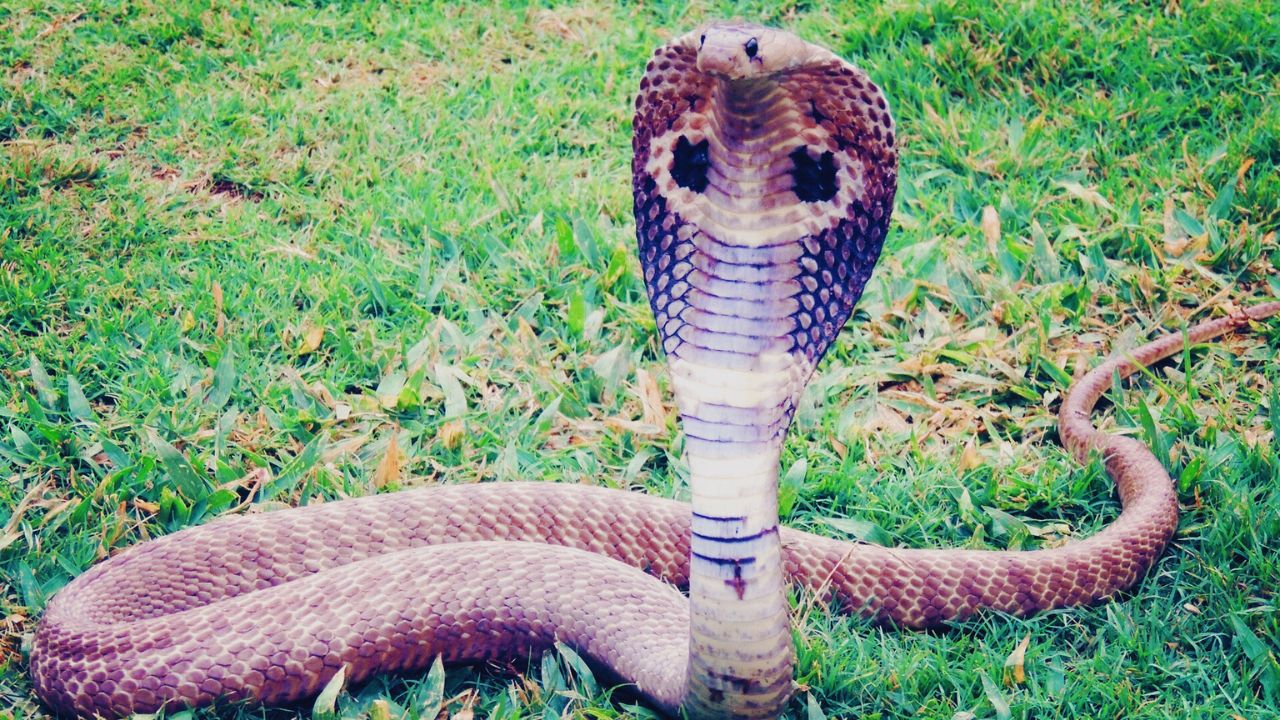
Monocled Cobra Facts
| Category | Details |
|---|---|
| Fun Fact | Responsible for the highest fatality rate of any snake in Thailand |
| Estimated Population Size | Unknown |
| Biggest Threat | Habitat loss and deliberate hunting (by humans) |
| Most Distinctive Feature | Round monocle shape on the back of the hood, sometimes with crossbands |
| Distinctive Feature | Some individuals have pale yellow crossbands along their body |
| Other Name(s) | Indian-spitting cobra |
| Incubation Period | Approximately 2 months |
| Habitat | Grasslands, forests, shrublands, swamps, and agricultural fields |
| Lifestyle | Crepuscular (active during dawn and dusk) |
| Favorite Food | Rodents, lizards, snakes, frogs, and toads |
| Common Name | Monocled cobra |
Ecology and Behavior
There is no denying the fascinating and intricate habits of monocled cobras. Their need to hunt and evade predators dictates much of what they do on a daily basis. These cobras emerge from their hiding places to feed as nightfall draws near. Small animals, birds, and sometimes other reptiles make up their main food.
The monocled cobra exhibits unusually aggressive behavior. It spreads its hood, raises its forebody, and lets forth a loud hiss when it feels threatened. The purpose of this exhibition is to terrify any prospective threats. If this warning is disregarded, the snake might attack very quickly. Even though they are fierce animals, these cobras would rather flee than fight unless they were trapped.
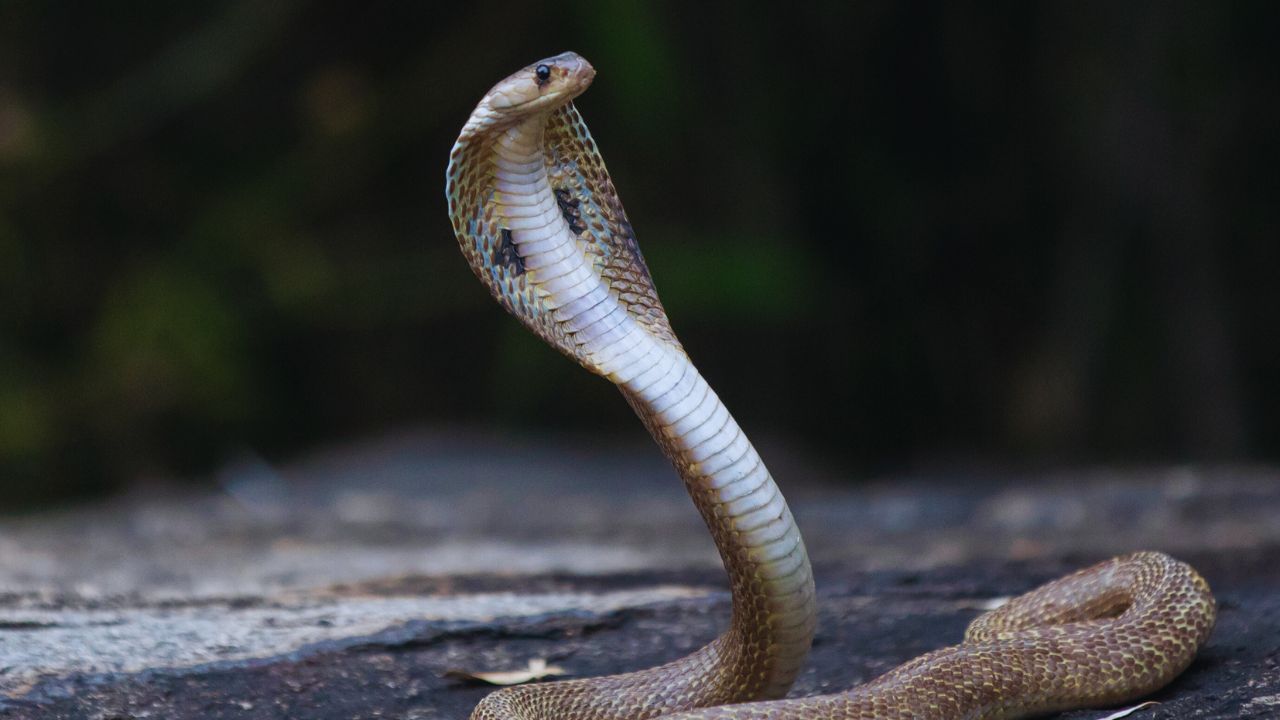
Lifespan and Reproduction
The monocled cobra’s reproductive cycle usually begins around the end of the year. In an isolated burrow, females deposit 16–45 eggs during the mating season. The incubation phase lasts for around two months. The juvenile cobras have venom glands that are ready to go the moment they hatch. From birth, they are self-sufficient, but within two weeks, their yolk sac starts to empty, leaving them on their own. Their survival in the wild, where they confront many risks from predators and environmental obstacles, depends on this fast growth.
Threats and Predators
Monocled cobras have strong defenses, yet they are still vulnerable to predators. Natural predators like eagles and bigger snakes like the king cobra pose a danger to them. However, because of the snake’s strong venom and robust defenses, the chances of it being eaten are rather minimal. Most prospective predators are further deterred by the monocled cobra’s ability to spew venom and deliver a deadly, poisonous bite.
Poisoning and Hazards to Humans
One of the monocled cobra’s most lethal characteristics is its venom. It strikes quickly, concentrating on the victims’ neurological systems. The symptoms might appear suddenly and include excruciating pain, numbness, paralysis, fatigue, and malfunctioning muscles. In extreme circumstances, a bite may cause cardiac arrest or breathing failure, which might be fatal if immediate medical attention is not given. The monocled cobra is among the most deadly snakes in its area due to the intensity and quickness of its venom.
The monocled cobra is also well-known for its capacity to spit in defense. This modification enables the snake to shoot venom in the direction of its intended victim, usually the eyes, causing agony and temporary blindness. The snake uses this action as an extra line of protection to ward off dangers without coming into contact with them.
Monocled Cobra Physical Characteristics
| Category | Details |
|---|---|
| Skin Type | Scales |
| Venomous | Yes |
| Aggression | High |
Status of Conservation
The monocled cobra is categorized as a species of least concern on the International Union for Conservation of Nature’s (IUCN) Red List. The species seems to be widespread and somewhat frequent, despite the fact that precise population numbers are seldom reported. Localized losses have been seen in several locations, most likely as a result of hunting activities and habitat damage. Because of its flexibility and elusiveness, the monocled cobra continues to flourish in its natural habitat in spite of these dangers.
Safety and Human Interactions
It may be harmful for humans to come into contact with monocled cobras, particularly in locations where they are prevalent. The cobra poses a severe risk to anybody who unintentionally come into contact with it due to its aggressive behavior and strong venom. While encounters in national parks are not common, those who live in or visit places where the monocled cobra is found run a considerable risk of being bitten. The fact that the monocled cobra has the greatest death rate among snakes in Thailand is especially noteworthy since it emphasizes how seriously it threatens the local community.
Comparable Species
The monocled cobra and a few other species in the cobra family are similar. Among the notable ones are:
Egyptian Cobra (Naja haje): Found in North Africa, this species is understood for its outstanding length and robust venom.
Yellow Cobra (Naja samarensis): Native to the Philippines, this cobra is recognized for its exclusive yellow color and venomous chunk.
Equatorial Spitting Cobra (Naja sumatrana): Located in Southeast Asia, this species is known for its spitting venom and aggressive defensive conduct.
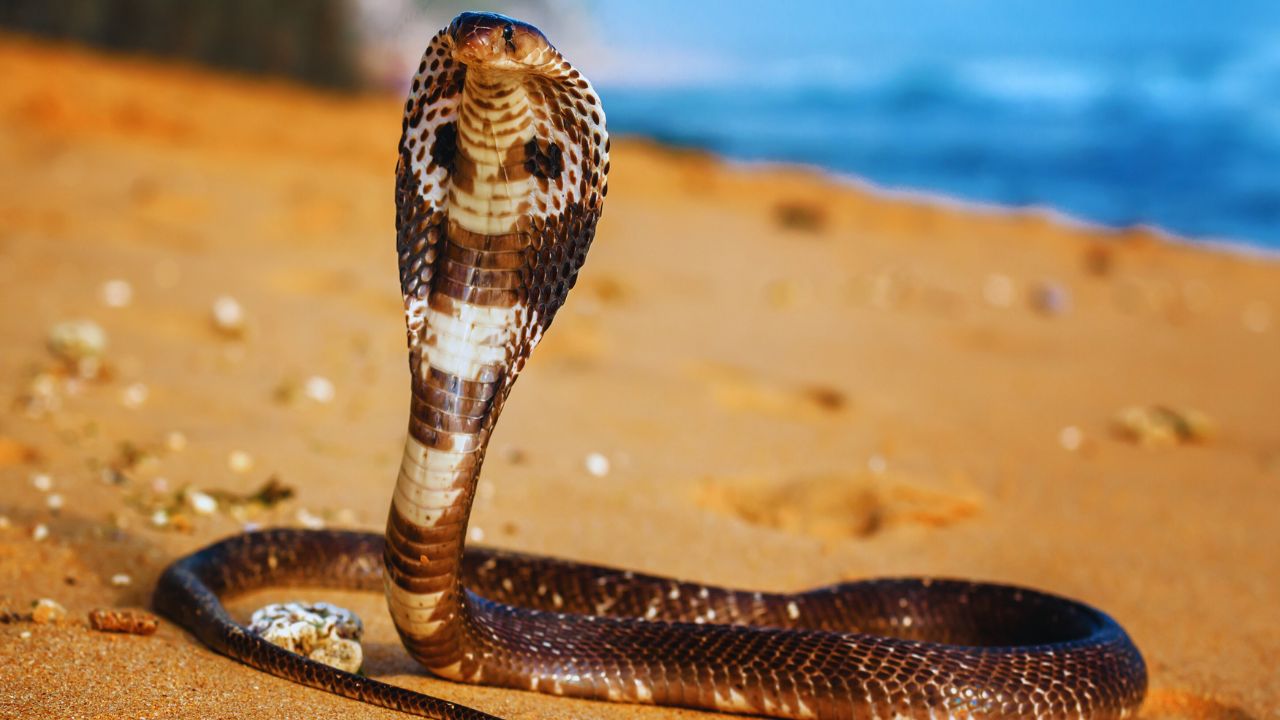
The monocled cobra is a stunning and fearsome snake that differs from other cobra species with its own special traits. It’s highly respected in herpetological circles because to its unique look, strong venom, and intricate behavior. Comprehending the environment, behavior, and risks associated with the monocled cobra is vital for the sake of conservation and human safety. Even though this snake is still considered to be a species of least concern, sustaining its numbers and reducing the hazards brought on by human interactions will require ongoing attention to its environment and the difficulties it encounters.
FAQs (Frequently Asked Questions) for Monocled Cobra
Do monocled cobras have venom?
The monocled cobra is really poisonous.
How do cobras with monocles hunt?
This is a hunting species that is most active in the hours before dusk. Once it has found its victim, the monocled cobra will attack with great speed and force. The poison will immobilize the victim in a matter of minutes. Then the snake eats it whole.
Are cobras with monocles hostile?
Indeed, it is thought that this species is quite aggressive. The poisonous teeth of the monocled cobra may be used to protect itself if it feels threatened.
Where do cobras with monocles reside?
Across South Asia, grasslands, woodlands, wetlands, and agricultural regions are home to the monocled cobra.
What is the diet of monocled cobras?
The monocled cobra feeds on lizards, rodents, and other snakes. Youngsters also often eat toads and frogs.
How poisonous is a cobra with a monocle?
The monocled cobra is said to have very lethal venom. A single dosage is sufficient to cause death. Additionally, it is one of the venoms with the quickest global half-lives.
Can a monocled cobra spew its poison?
While certain populations are capable of spitting poison, this is not their main mode of assault.
What is a leucistic, monocled cobra?
The partial loss of most skin pigmentations, which results in an extremely pale or white body hue, is the cause of the leucistic color morph. This resembles, but is not quite the same as, the albino color morph, in which the body nearly completely lacks the skin pigment melanin. Normally, albino causes pink or crimson eyes because it reveals blood vessels. In contrast, the eyes of a leucistic snake are often colored normally. Because their white hue generally puts them at a disadvantage when battling predators for survival, these white color variants are sometimes quite scarce in the wild. Since white skin is so noticeable and easy to identify, many of them are murdered while still very young. These color variants have become increasingly prevalent in captivity because of the clever use of human-guided artificial breeding, but only the most daring breeders would take the time to work with the monocled cobra.
What size fangs do monocled cobras have?
Usually, the fangs don’t go much bigger than a little bit of an inch. But their length allows them to pierce flesh and inject a deadly quantity of venom.





